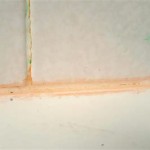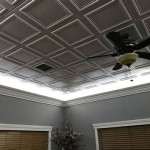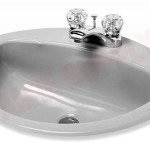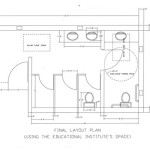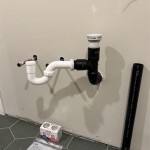How to Install Bathroom Fan Ductwork
Proper ventilation is crucial for bathrooms to prevent moisture buildup, which can lead to mold, mildew, and structural damage. A bathroom exhaust fan effectively removes excess moisture, but its performance depends heavily on correctly installed ductwork. This article outlines the process of installing bathroom fan ductwork, ensuring optimal ventilation and long-term effectiveness.
Planning and Preparation: Before beginning the installation, careful planning is essential. Determine the shortest, most direct route from the fan housing to the exterior vent. Fewer bends in the ductwork improve airflow efficiency. Measure the distance to calculate the necessary duct length and purchase the appropriate size duct, typically 4-inch or 6-inch diameter, matching the fan's outlet.
Material Selection: Select rigid metal ducting (galvanized steel or aluminum) for optimal performance. Flexible ducting, although easier to install, increases airflow resistance and can trap moisture, leading to mold growth. Ensure all connections, including elbows and couplings, are also metal. Avoid using plastic components within the ductwork.
Connecting to the Fan Housing: Begin by attaching the first section of ductwork to the fan housing outlet. Use metal foil tape, not duct tape, to seal the connection securely. Foil tape provides a more durable and airtight seal, preventing air leakage. Ensure the connection is snug and completely covered with the tape.
Running the Ductwork: Run the ductwork along the planned route, supporting it with straps or hangers every 4-6 feet. Maintain a slight downward slope towards the exterior vent to allow condensation to drain. Avoid kinks or sharp bends in the duct, as these restrict airflow.
Using Elbows and Couplings: When changes in direction are necessary, use elbows designed for the specific duct size. Minimize the number of elbows used, as each one reduces airflow efficiency. Connect duct sections with metal couplings, ensuring tight, taped connections. Avoid using screws to connect duct sections, as they can disrupt airflow and create points for leakage.
Insulating the Ductwork: In colder climates, insulate the ductwork to prevent condensation and heat loss. Use insulation specifically designed for ductwork, such as foil-faced fiberglass or rigid foam insulation. Wrap the insulation snugly around the duct and secure it with tape or wire ties.
Installing the Exterior Vent: The exterior vent cap should be weatherproof and equipped with a backdraft damper to prevent outside air and pests from entering the ductwork. Ensure the vent cap is properly secured to the exterior wall and sealed with caulk to prevent water intrusion.
Connecting to the Exterior Vent: Connect the final section of ductwork to the exterior vent cap, again using metal foil tape to create an airtight seal. Ensure the connection is secure and weatherproof to prevent leaks and drafts.
Testing the Installation: Once the installation is complete, test the fan's operation. Check for proper airflow at the exterior vent. Listen for any unusual noises that might indicate leaks or obstructions in the ductwork. If any issues are detected, carefully inspect the entire system and address any problems.
Safety Precautions: When working with electrical wiring, always turn off the power to the circuit at the breaker box. Use appropriate safety equipment, such as gloves and eye protection. If working in an attic or other confined space, ensure adequate ventilation and lighting.
Building Codes and Regulations: Local building codes may have specific requirements for bathroom exhaust fan installation, including duct size, materials, and venting location. Consult local building codes and obtain any necessary permits before beginning the project.
Maintenance and Cleaning: Periodically inspect and clean the exterior vent cap to remove debris that can obstruct airflow. Depending on usage and environment, the fan motor may require occasional cleaning or lubrication. Refer to the manufacturer's instructions for specific maintenance recommendations.
Professional Installation: While installing bathroom fan ductwork is achievable for many homeowners, complex installations or those involving significant electrical work may require the expertise of a qualified electrician or HVAC professional. Consulting a professional can ensure the job is done correctly and safely, complying with all applicable codes and regulations.

Installing A Bathroom Fan Fine Homebuilding

Venting A Bath Fan In Cold Climate Fine Homebuilding

Blog

Install A New Bathroom Vent Fan Light

Inspecting The Bathroom Exhaust Fan Internachi

How To Install A Bathroom Fan Diy Family Handyman

Inspecting For Air Sealing At Kitchen And Bathroom Exhaust Fans Internachi

How To Use An In Line Exhaust Fan Vent Two Bathrooms Diy Family Handyman

Domestic Fan Installation Compliance Checker Vent Axia

Inspecting The Bathroom Exhaust Fan Internachi
Related Posts
